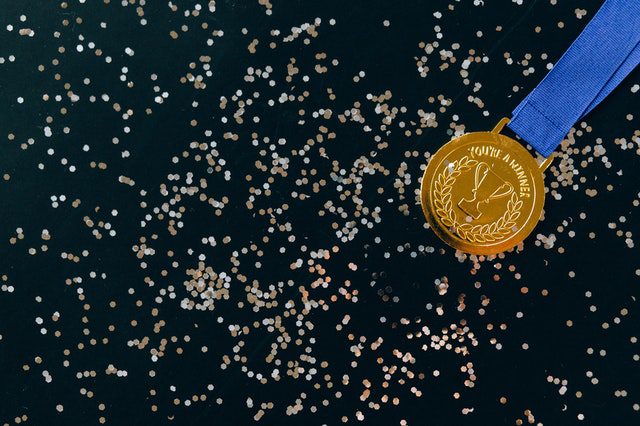197Views 0Comments
How to Create Successful Atomic Habits?

We’ll discuss how to create positive change within your life. As it turns out, the most efficient way to create positive changes is to develop the proper habits. Please take a look, and learn everything you need to know about habits: their definition, how to develop them, and, most importantly, how to ensure that the most effective ones can last. Following these easy guidelines and changing just the small things you do, you’ll get amazing outcomes. So, let’s get started!
Making habits is often an advantage. If you are driving to work, for instance, it is no longer necessary to consider whether to go left or right. The route becomes routine.
Small habits can have profound effects on your lifestyle.
Small, simple actions that can be executed 10 times or twice don’t make a huge difference. When compounded over time, these identical small steps can create a significant impact. So the most important factor to success, impact, or the change you want to see is small steps and perseverance.
” Drop by drop is the water pot filled..”
— BUDDHA
Imagine that a plane takes departure in Los Angeles en route to New York. If the pilot decides to alter the course 3.5 degrees to the south during takeoff, it will move the plane’s nose just a few feet. Outside the cockpit, nobody was on the plane would notice the tiny change. But during an entire trip across the nation, the impact of the shift could be substantial, and the passengers would be able to exit their aircraft in Washington, DC, not New York.
We don’t see any small changes because the immediate effect is minimal. If you’re out of fitness today and you do a 20-minute run, and you’re still unfit for tomorrow. In contrast, if you consume an entire pizza today, it’s unlikely to cause you to gain weight overnight. However, if we continue to repeat tiny habits day in and day out, our choices will have big consequences. You can eat pizza every day, and you’ll likely gain weight in a year. Run for 20 minutes each day, and you’ll end up being leaner and healthier, though you may not have noticed the transformation taking place.
If you are looking to see a positive change to your lifestyle, realize that change is a process that requires patience and faith that your lifestyle is helping you stay on the right track even if you’re not getting immediate outcomes.
If you were to gaze towards a waterway to observe its effect on the eroding rock, you’d not see anything. It is necessary to watch it for a long time to observe any changes on the spot.
Most people think that water doesn’t have an impact on rocks since it’s not immediately identifiable. We have been enthralled by immediate gratification, so things that aren’t immediately recognized are usually ignored. So, to claim that the tiniest effect of the water hitting rocks isn’t significant is a big mistake.
If you’re finding that your habits and behaviors do not seem to be producing results, try to focus on your life’s current direction instead of the current results. If you’re not able to put much money in your savings account but are saving money every month, then you’re sure that you are on the right track. Your current numbers may not be the best; however, keep moving in this direction, and within a few months or perhaps a couple of years, you’ll see a significant improvement.
The secret to making major changes to your lifestyle does not require massive changes; you do not have to change your lifestyle or completely reinvent yourself. Instead, you can implement small adjustments to your habits that, if repeated over and over again, can become routines that could bring about big outcomes.
Habits are automatic behavior patterns that we’ve learned through our own experiences.

When you enter an unlit room, You don’t have time to think about what you should do next. You naturally reach for the light switch. It’s a pattern that has been repeated numerous times so that it’s become automatic.
Habits are automatic behaviour patterns that have been programmed to our brains by repetition. As time passes and we become less conscious of it, we begin to perform them more or less unconsciously.
How do we form habits? Our brains figure out how to react to new situations by an experiment of trial and error. The late nineteenth-century psychologist Edward Thorndike famously demonstrated this through an experiment where he puts cats in a black box. It was no surprise that each cat attempted to escape the cage, sleeping at the corners and clawing at the walls. The cat eventually could locate a pressed lever and let a door open, allowing escape.
” Change might not be fast and it isn’t always easy. But with time and effort, almost any habit can be reshaped.”
— CHARLES DUHIGG, THE POWER OF HABIT: WHY WE DO WHAT WE DO IN LIFE AND BUSINESS
Thorndike then removed the cats who’d succeeded in escaping and carried out the same experiment. What were his findings? Then, after being placed in the box several times, every cat learned the method. Instead of running around for a few minutes or longer, the cats went straight to the lever. After about 20 or 30 times, the average cat could get out in just six minutes. That is, the procedure of getting out the box was now routine.
Thorndike has discovered that habits that have positive results, for example, the pursuit of freedom – are repeatedly performed until it becomes habitual.
Like the cats of the 19th century, we come upon solutions that solve our challenges and problems. It’s a good thing that we can now understand a bit more about how our habits operate.
Consider something that requires you to spend a lot of time mastering, for example, the art of parallel parking. Parallel parking at first was difficult and required you to devote lots of your mental energy. However, once you were familiar with using parallel parking, it became more effortless — almost routine, one could say.
“ The chains of habit are too weak to be felt until they are too strong to be broken.”
— Samuel Johnson
The habitual behaviour begins with a cue or trigger to perform. Entering a dark place prompts you to take any action that allows the sight. There is then a need for a change of state of being – the desire to see. Then, we respond or action, which is switching on the light. The final stage of the procedure and the final purpose of any habit will be the reward. In this case, it’s the sensation of light relief and ease that can be derived from observing your surroundings.
Every habit is subjected to the same procedure. Do you routinely take a cup of coffee each morning? The moment you wake up is your signal, which triggers an urge to be alert. The answer is to get yourself from bed and prepare your cup of coffee. The reward is feeling refreshed and ready for the world.
Of course, some habits are not beneficial for us. Once we know how habits function, let’s examine ways to create positive habits to improve our lives.
Building new habits take hard-to-miss signals and an action plan.

We all have clues that can trigger certain behaviours. The beep of your smartphone, for instance, is a signal to go through your messages.
When you realize that certain stimuli trigger your habits, you can use this information to alter your routine. How? One method is to alter your environment and surroundings to promote healthier behaviour.
Let us look at the work of the Boston-based doctor, Anne Thorndike. She sought to help her patients improve their eating habits without forcing patients to make a conscious choice. What did she do to accomplish this? She changed the cafeteria in the hospital. The original refrigerators near the cash registers had only soda. Thorndike brought in water and not just at the cash registers but also all other drinking stations. Over three years, soda sales fell by 11 percent, while water sales jumped by 25. People were choosing healthier options simply because the reason to drink water over soda was easier.
Simple modifications to our environment could create a huge impact. Do you want to play the guitar? Put the guitar in the middle area of your sitting room. Are you trying to eat healthier foods? Put them on the table and not in the drawer for salads. Your cues should be as clear as you can, which will make it easier for you to react to them.
Another great method to increase the strength of the message is to make use of implementation intentions.
The majority of us aren’t sure regarding our goals. We declare, “I’m going to eat better,” and then expect that we’ll keep it up. Implementation plans provide an action plan that outlines when and where you’ll implement the behaviour you want to develop. It’s been proven by research that it’s effective.
An analysis of the voting habits of the United States found that the people who were asked the question “At what time will you vote?” and “How will you get to the voting station?” were more likely to vote as opposed to those who were asked if they were going to vote.
Don’t just tell yourself, “I’ll run more often.” Tell yourself, “On Monday, Wednesday, and Friday, when the alarm goes off, the first thing I’ll do is wear my running gear and clock two miles.” Put your running shoes in place on the ground, where you’ll be able to spot them. You’ll give yourself the direction you want to take and a clear cue, and it might surprise you how easy this can make it develop a positive running routine.
Humans are motivated by the desire for reward. Therefore making your habits appealing will make it easier to stick to them.

In 1954 Neuroscientists James Olds and Peter Milner experimented to determine the neurology behind desire. By using electrodes, they inhibited the release of dopamine, a neurotransmitter that is released in rodents. Then, to their delight, they stopped living. They were unable to take food or drink, reproduce, or anything other than that. A few days later, they all perished from thirst.
The brain of the human being produces dopamine, which is a hormone that helps us feel happy whenever we enjoy things like eating or engaging in sexual activity. We also receive an increase in dopamine levels whenever we anticipate those pleasure-inducing actions. It’s the brain’s method of pushing us forward as well as encouraging us to take action. In our brain’s system of reward, desire for something is as common as receiving something. That’s why children enjoy the excitement of Christmas to such an extent. It’s also the reason that fantasizing about your next exciting date is so satisfying.
It’s also possible to apply this information in our favour when we attempt to establish habits. If we create a habit that we enjoy in the future, we’ll be more likely to keep it and follow-through.
“ We become what we repeatedly do.”
— SEAN COVEY, THE 7 HABITS OF HIGHLY EFFECTIVE TEENS
An excellent method for this is to use temptation bundling. Try to choose the behaviour you consider to be essential but not appealing and then link it to an activity you are drawn to, which can trigger the motivating dopamine rush.
Ronan Byrne, an engineering student from Ireland, knew that he needed to be more active but found it difficult to enjoy doing exercises. But he enjoyed watching Netflix. He, therefore, hacked his exercise bike, connected it to his laptop, and created a program that would play Netflix only if he cycled at a specific speed. Connecting the physical activity of cycling to a habit attracted him and transformed a disgusting task into enjoyable.
You don’t have to be an engineer to make this work for your daily life. If you’re looking to get fit but would like to stay up-to-date with the latest celebrity gossip, You could commit to only reading magazines working out. If you’re looking to watch sports but need to conduct calls to sell, you can promise you a half-hour of ESPN after you speak to the tenth person you’ve talked to. Then, you could even find the boring work fun, as you’ll be looking forward to a pleasant reward for completing them.
If you are looking to establish an entirely new habit, try to create a habit that is as easy to implement as you can.

We spend our time engaging in simple activities. The process of scrolling through Instagram is an example. It takes almost no effort, which makes it simple to fill with our time. Making a hundred push-ups, or learning Mandarin Chinese, in contrast, is a significant effort. Doing these exercises every day until they become routine is a challenge.
Making the process as simple as is possible is the key to making them habitual. There are a few strategies we can adopt to make everything seem simpler. First, we should focus on decreasing friction.
The writer has been unable to send greeting cards, whereas his wife can always send cards. Why? She keeps a collection of greeting cards in her home, sorted by the event, making it much easier to send condolences or congratulations or whatever else is needed because she doesn’t need to buy cards when someone is married or suffers unintentional accidents not much hassle to send one.
“ A nail is driven out by another nail; habit is overcome by habit.”
— ERASMUS
It is also a strategy to make it harder for poor behaviours. If you’d like to spend less time watching the television, disconnect it and remove your remote batteries. This act will create enough friction that you can only watch what you need to.
Another trick to make a habit more enjoyable in the long run is to use the two-minute rule, which can help make any new endeavour manageable. The idea is to reduce every activity you do to something you can do in just two minutes. Are you looking to expand your reading? Don’t be compelled to read one book every week. Instead, it would be best if you were reading two pages every evening. Do you want to race the marathon? Make it a point to put on your running shoes every day after work.
The two-minute rule can be a method to establish easily attainable habits that can take you to bigger things. After you’ve put off your running shoes, you’ll likely go running. After you’ve read two pages, you’ll likely go on. The rule is that beginning is the initial and most crucial step to getting something done.
Making your routines immediately pleasing is crucial to a successful change in behaviour.

In the early 1990s, a researcher from public health Stephen Luby, working in the vicinity of Karachi, Pakistan, achieved an astounding 52 percent reduction in diarrhoea in children in the area. Pneumonia levels dropped by 48 per cent and skin infections dropped by 35 per cent. What’s Luby’s secret? Great soap.
Luby was aware that handwashing and sanitation were essential for preventing sickness. The people in the area knew that, too. They were not putting their knowledge into the habit. A dramatic change in handwash experience happened when Luby joined forces with Proctor and Gamble to bring high-quality soap to the area at no cost. After a few hours, hand washing became an enjoyable experience. The soap was lathered effortlessly and smelled delicious. Everyone was now washing their hands because this was now an extremely pleasant process.
The most crucial principle for changing behavior is to ensure that the habits you adopt are enjoyable.

It can be challenging because of evolutionary reasons. Nowadays, we are living in what is known as a delayed return environment. You arrive at work today, but your paycheck – or a salary – isn’t due until the end of the current month. You exercise early in the morning, and you don’t shed weight in a matter of hours.
Our brains evolved to deal with the immediate-return environments of the earlier human species, who didn’t focus on future returns such as savings for retirement or adhering to a strict diet. Their focus was on their immediate needs, such as getting what they would eat next, locating shelter, and remaining alert to stay away from lions.
Instant returns can lead to negative behaviours as well. Smoking cigarettes can cause lung cancer within 20 years. However, for the present, it eases your stress and your craving for nicotine. The above example implies that you could ignore the longer-term consequences and enjoy cigarettes.
” There is no more miserable human being than one in whom nothing is habitual but indecision.”
— WILLIAM JAMES
If you’re pursuing routines that lead to a delayed return, you should try to associate an immediate reward with these habits.
For instance, one couple the writer knew was looking to eat less out and cook more often, be healthier, and save money. To achieve this, they set up an account to save money named “Trip to Europe,” Each time they skipped dining out, they deposited $50 into it. The momentary satisfaction of watching the money go into that savings account brought them the immediate satisfaction they required to stay on the right track to achieve their long-term, ultimate reward.
Although it’s satisfying and enjoyable to create habits, we might have difficulty keeping these habits. Let’s look at the ways we can keep our promises to ourselves.
Create a framework that will keep your lifestyle on track with contract trackers and other tools.

When trying to create your journal or quit smoking cigarettes, regulating your behaviour isn’t easy. There are, however, some simple steps that can aid.
Habit tracking is a straightforward yet effective method. Many people keep an account of their daily routines, and one of the most famous is the founder’s father, Benjamin Franklin. When he was 20, Franklin kept a journal, noting his adherence to 13 virtues that included abstaining from the unnecessary conversation and always doing something productive. He logged his successes each evening.
You, too, can create a habit tracker by using a basic planner or diary. You can then start marking off each day that you keep to your preferred actions. It’s a good idea since habit tracking itself is appealing and a satisfying routine. The anticipation and the act of completing each day make you feel good and keep you on track.
Another option is to create a routine contract that has the negative consequences of failing to adhere to the plan.
Bryan Harris, an entrepreneur from Nashville who was a Nashville-based entrepreneur, took his routine contract seriously. In a contract that his wife signed, he and his trainer Bryan Harris pledged to bring the weight off to around 200 pounds. He identified specific behaviours that could help him get there, including recording his daily food intake and measuring himself every week. Then, he imposed sanctions for failing to do those things. If he didn’t keep track of the amount of food consumed, he would have to pay $100 to his trainer. If the trainer did not weigh him and weigh himself, he’d owe 500 dollars to his spouse. The method worked, driven not only by his fear of losing money but by the fear of appearing embarrassing before two people who were important to him. Humans are social creatures. We are concerned about people’s opinions in our lives, so being aware that someone is watching your every move can be a powerful motivation to succeed.
Why not make the goal of having a routine contract? Even if it’s not as precise as Harris’s, you might want to consider signing a contract with your spouse, your most trusted friend, or any of your colleagues. If you agree on the consequences of failure to keep the commitment, it will be more likely to keep your routines. As we’ve learned, adhering to a positive routine is the best way to succeed in life, even if it’s just a little.
Final summary

A minor modification in your behaviour won’t change your life in a matter of minutes. Make that behaviour something you do each day, and it will lead to major shifts. Making a change in your life isn’t about making huge breakthroughs or completely transforming your life. It’s more about establishing the foundation of a positive habit that, when combined, yield amazing outcomes.
Utilize habit stacking to teach a new behaviour.
If you’re trying to establish an entirely new habit, consider placing it on top of your existing routine. If you’re looking to begin meditating, but you’re having trouble finding the time. Think about the things that you do every morning, such as drinking coffee every morning. You can then layer your new routine on top of that. Commit to meditating every morning after you’ve finished your coffee, and then build on the momentum that naturally comes from a routine you already have.
As you’ve learned, habits can be a potent influence for good or bad. It can be a challenge to figure out what you can do to evaluate your current habits, and it can be even more difficult to decide on your future. What are the best habits to develop, and what bad habits should you attempt to eliminate?


